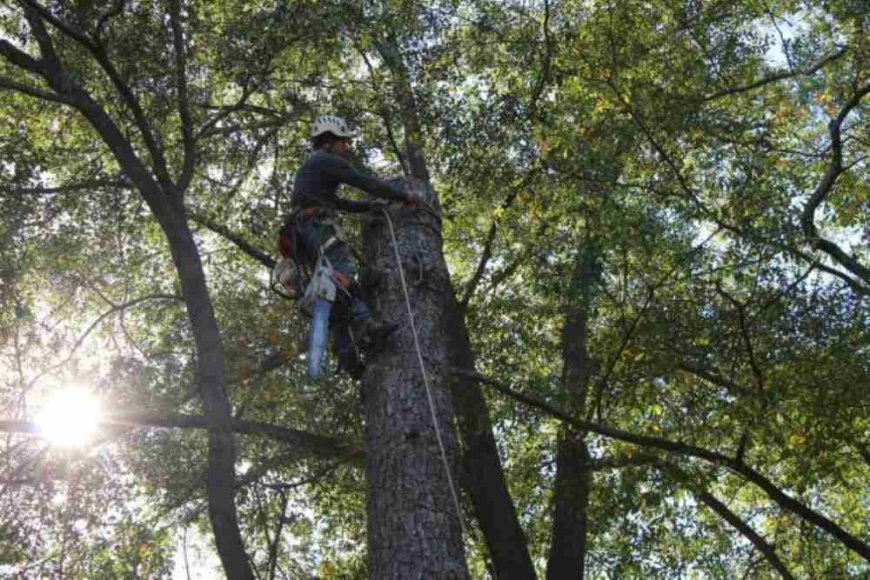The Ultimate Guide to Tree Pruning: Techniques, Benefits & Best Practices
Tree pruning isn’t just for looks — it’s a vital part of maintaining healthy, safe, and beautiful trees. And while DIY works in some cases, don’t hesitate to bring in the pros when needed.

Let’s be real — trees don’t exactly come with instruction manuals. But when it comes to keeping them healthy, safe, and beautiful, tree pruning is one of the most essential things you can do. Whether you’re looking to boost growth, improve your view, or just stop branches from scratching your roof, pruning is the answer.
What is Tree Pruning?
Tree pruning is the process of selectively removing branches or parts of a tree to improve its structure, health, or appearance. It’s like giving your tree a haircut — but one that can help it live longer, grow stronger, and stay safer.
Why Pruning Matters for Tree Health and Safety
Without proper pruning, trees can become overgrown, diseased, or structurally weak. Branches can snap off, pose risks to property, or interfere with power lines. That’s why smart pruning isn’t just about looks — it’s a necessity.
Key Benefits of Tree Pruning
Enhances Tree Health
Removing diseased, dead, or insect-infested branches helps prevent the spread of decay.
Promotes Growth and Structure
By thinning or shaping the crown, trees can grow more evenly and withstand storms better.
Improves Curb Appeal
A well-pruned tree instantly elevates the look of your landscape. It adds that polished, intentional vibe to your yard.
Reduces Safety Hazards
Pruning helps eliminate weak limbs that could fall and cause injury or property damage.
Encourages Better Fruit Production
For fruit trees, strategic pruning increases sunlight penetration and air circulation, leading to bigger, tastier yields.
Common Types of Tree Pruning
Crown Thinning
Selective removal of branches to reduce density without altering the overall shape. Great for wind resistance and light penetration.
Crown Raising
Removes lower branches to provide clearance over sidewalks, roads, or rooftops.
Crown Reduction
Reduces the overall size of the tree’s canopy. Useful for trees growing too close to structures or power lines.
Deadwooding
Removing dead, dying, or diseased limbs to protect the tree and reduce hazards.
Pollarding
An aggressive technique that cuts back all new growth annually. Often used for ornamental trees in urban settings.
When is the Best Time to Prune Trees?
Winter Pruning
Most trees are dormant in winter, making it the ideal time for major pruning without shocking the tree.
Spring/Summer Pruning
Best for minor shaping and removing new growth. Be cautious—over-pruning during active growth can stress the tree.
Fall Pruning
Generally avoided, as wounds may heal slower and increase vulnerability to disease.
Species-Specific Timing
Always consider the type of tree. Flowering and fruiting trees, for example, benefit from pruning at very specific times.
Tools and Equipment for Tree Pruning
Manual Tools:
-
Hand Pruners – for small twigs and branches
-
Loppers – for medium-sized limbs
-
Pruning Saws – for thicker branches
Power Tools:
-
Pole Saws – extend your reach safely
-
Chainsaws – for large cuts, preferably used by professionals
Safety Gear:
-
Gloves, goggles, helmets, and harnesses (if climbing)
How to Prune a Tree Properly
Step-by-Step Guide:
-
Inspect the tree
-
Remove dead or diseased branches
-
Identify crossing or rubbing branches
-
Shape the crown carefully
-
Clean your tools between cuts
Identifying Branches to Cut
Focus on limbs that:
-
Are dead or broken
-
Grow downward or inward
-
Compete with the main leader
Making the Right Cut
Use the three-cut method to avoid bark tearing:
-
Undercut a foot from the trunk
-
Make a top cut a bit further out to remove the limb
-
Finish with a clean cut near the trunk
Avoiding Common Mistakes
-
Don’t “top” your tree — it weakens structure
-
Don’t over-prune — removing more than 25% can shock the tree
-
Don’t prune in wet weather — increases disease risk
Tree Pruning for Different Goals
Pruning for Health
Get rid of deadwood, diseased limbs, and weak branches.
Pruning for Shape and Beauty
Give your tree a balanced, natural look without making it look “butchered.”
Pruning for Clearance and Safety
Create space around homes, fences, and utility lines.
Pruning for Fruit Production
Open up the canopy for light and air; remove suckers and water sprouts.
DIY Tree Pruning vs. Hiring a Pro
Pros and Cons of DIY
Pros:
-
Saves money
-
Great for small trees
Cons:
-
Risk of injury
-
Can damage the tree if done wrong
When to Call in the Experts
-
Tree is near power lines
-
You need to climb
-
The tree is large or diseased
Cost of Professional Tree Pruning Services
Expect to pay:
-
$100–$500 for small to medium trees
-
$500–$1,500+ for large trees or specialty pruning
Tree Pruning Laws and Regulations
Local Rules on Tree Trimming
Some areas restrict pruning certain protected species or require permits for large removals.
Neighbor Trees and Legal Boundaries
If a neighbor’s branches hang over your yard, you can usually prune them—just don’t trespass or damage the tree.
Conclusion
Tree pruning isn’t just for looks — it’s a vital part of maintaining healthy, safe, and beautiful trees. Whether you’re trying to boost fruit production, prevent falling limbs, or simply improve your view, proper pruning pays off big time. And while DIY works in some cases, don’t hesitate to bring in the pros when needed.
FAQs
1. How often should I prune my trees?
Most trees benefit from annual or biannual pruning, depending on species and growth rate.
2. Can pruning kill a tree?
Yes — over-pruning or improper cuts can seriously harm or even kill a tree.
3. What’s the difference between pruning and trimming?
Pruning focuses on health and structure; trimming is more about appearance and shaping.
4. Is it okay to prune trees in summer?
Yes, for light shaping or removing new growth. Avoid heavy cuts in extreme heat.
5. Why is the “three-cut method” recommended?
It prevents bark tearing and ensures clean, healthy cuts that heal better.
What's Your Reaction?
 Like
0
Like
0
 Dislike
0
Dislike
0
 Love
0
Love
0
 Funny
0
Funny
0
 Angry
0
Angry
0
 Sad
0
Sad
0
 Wow
0
Wow
0




































